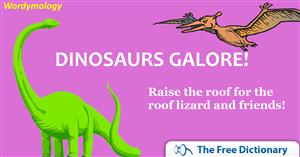Demonstrative Pronouns
What is a demonstrative pronoun?
Demonstrative pronouns are pronouns used to function as or stand in place of nouns or noun phrases in a sentence while also indicating that which is nearby or far away in space or time.
Because demonstrative pronouns are less specific than the nouns or noun phrases they replace, you have to rely on context to clarify what is being referred to. In spoken English, this can mean having to gesture toward, point to, or look at the thing or things indicated by the demonstrative pronoun. In written English, demonstrative pronouns are usually used to refer to previously mentioned things, ideas, or topics (their antecedents).
There are four demonstrative pronouns:
- this
- that
- these
- those
Functions of demonstrative pronouns
The functions of the four demonstrative pronouns can be summarized in the following table:
Near | Far | |
Singular | this | that |
Plural | these | those |
As you can see, each pronoun indicates something that is either singular or plural and either near or not near to the speaker. For example:
- “This isn’t mine.” (singular, near)
- “Give me that.” (singular, not near)
- “These are really gross.” (plural, near)
- “I forgot to bring those.” (plural, not near)
Demonstrative pronouns can also be used to indicate more abstract things, such as chronological events or ideas:
- “This is a fantastic party!” (This refers to a single party that is currently happening.)
- “That was so cool.” (That likely represents a past event or an old idea.)
- “These are the kinds of ideas we need more of.” (These represents ideas that were created or suggested very recently.)
- “Those were some wild times, huh?” (Those in this case represents multiple past events or moments in time.)
Indicating people with demonstrative pronouns
Demonstrative pronouns are almost always used to stand in for things, places, events, ideas, and unfamiliar animals. In certain cases, however, some of these pronouns may also be used to indicate people. This can only be done when the person is identified by the pronoun’s antecedent within the same sentence and connected to it with the linking verb be. For example:
- “That is Amy standing by the door.”
- “This must be Jake.”
- “That appears to be the woman I saw earlier.”
- “Who is that?”
Demonstrative Pronouns vs. Demonstrative Adjectives
Most demonstrative pronouns may also function as demonstrative adjectives (sometimes known as demonstrative determiners), but their usage is quite different. As demonstrative pronouns, this, that, these, and those represent nouns. As adjectives, however, these same words instead introduce and qualify nouns or noun phrases, appearing immediately before them in a sentence.
Let’s look at some examples to see this difference more clearly:
- “She wants to photograph this painting.” (demonstrative adjective)
- “She wants to photograph this.” (demonstrative pronoun)
- “That book is one of my favorites.” (demonstrative adjective)
- “That is one of my favorites.” (demonstrative pronoun)
- “These handmade chocolates taste the best.” (demonstrative adjective)
- “These taste the best.” (demonstrative pronoun)
- “He wanted to try those old recipes.” (demonstrative adjective)
- “He wanted to try those.” (demonstrative pronoun)
You may have noticed in these examples that the noun or noun phrase is simply being omitted in order to turn the demonstrative adjective into a pronoun. This can be done so long as the listener or reader is certain of what’s being indicated. Be careful, though: demonstrative adjectives cannot simply be shortened to demonstrative pronouns if they are being used to indicate a person, regardless of whether the listener or speaker understands who is being indicated. For example:
- “Go talk to that woman.” (correct)
- “Go talk to that.” (incorrect)
- “This man is quite handsome.” (correct)
- “This is quite handsome.” (incorrect)
Get all volumes of The Farlex Grammar Book in paperback or eBook.

